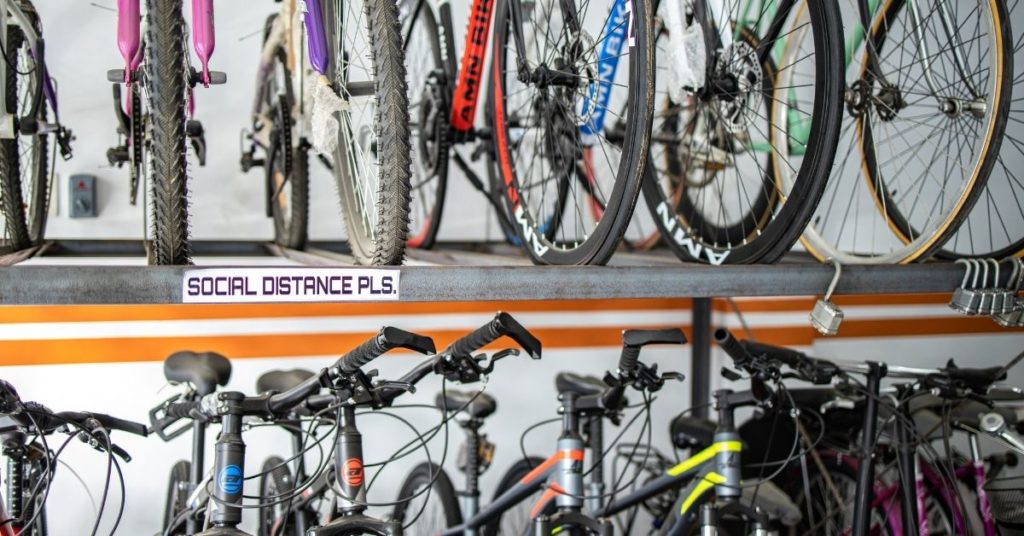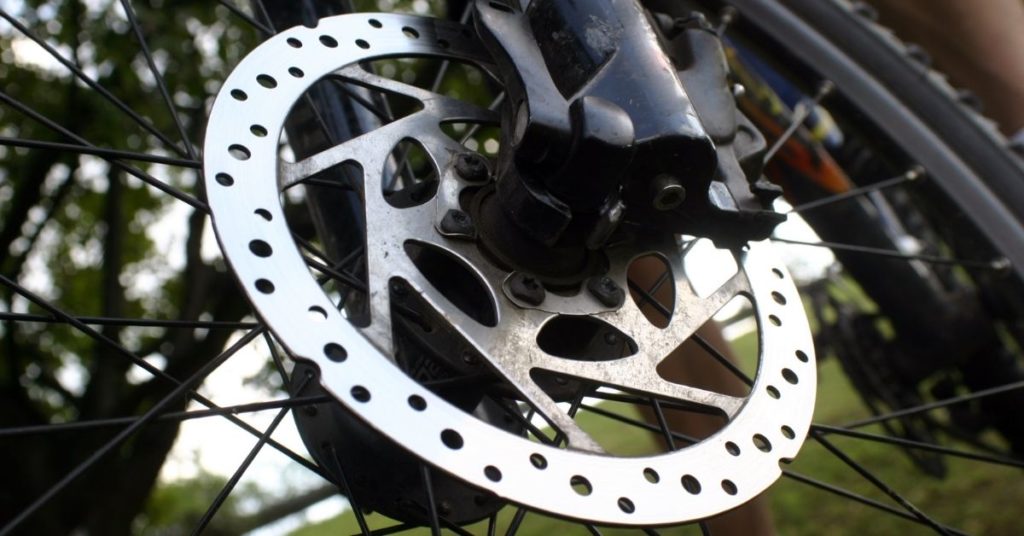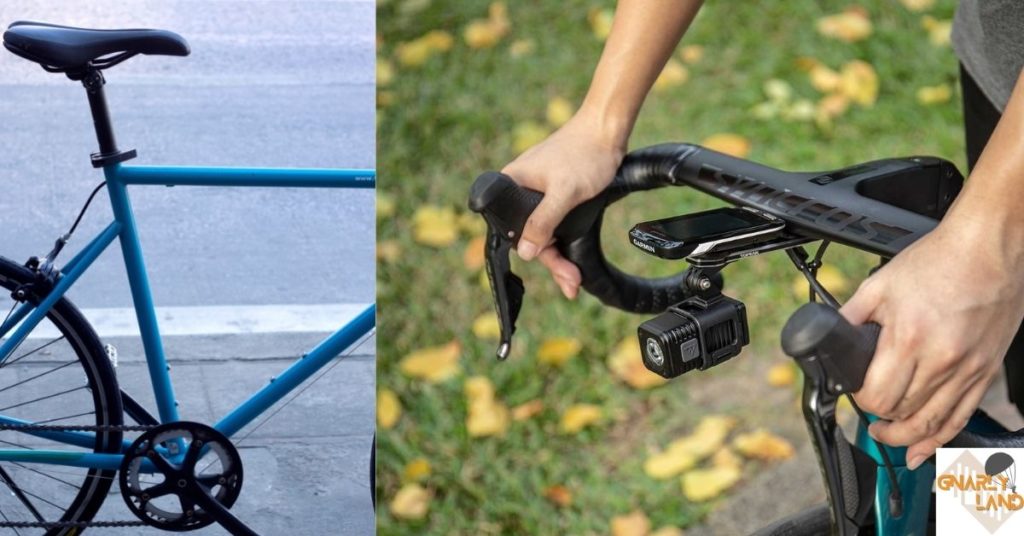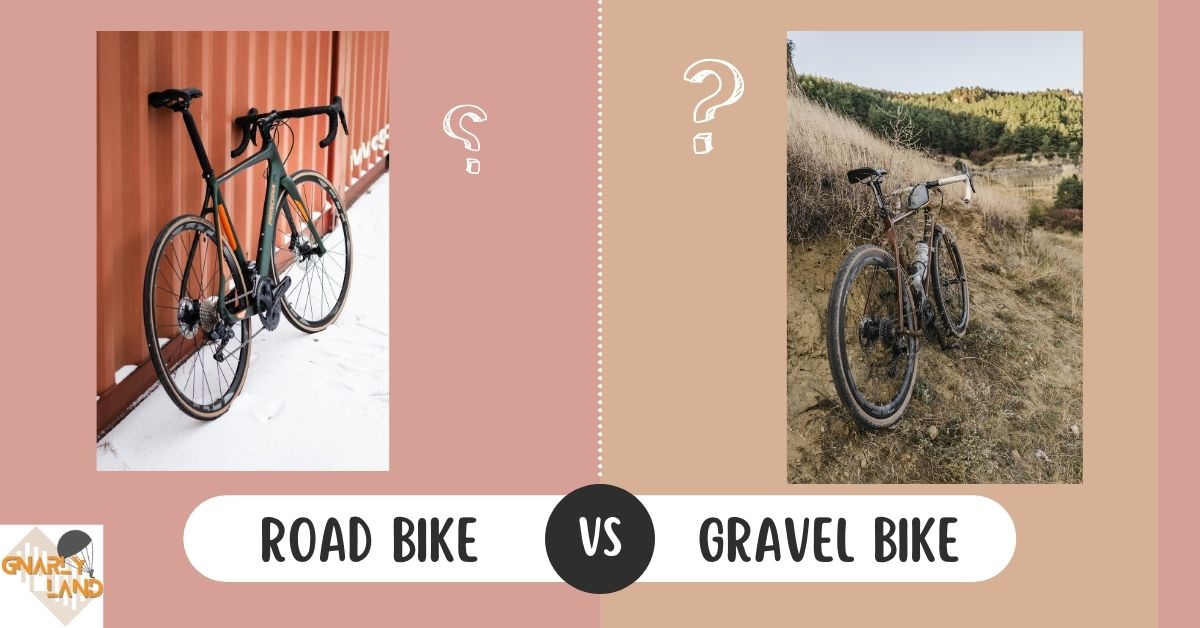Gravel bike and road bike are the two most popular forms of cycling, and it is pretty easy to why. They are both versatile and can be ridden on different types of paths. You can go almost anywhere with a gravel bike, from off-road to muddy trails to singletrack forests, while road bikes will take you anywhere on pavement, sides of mountains, or local bike paths.
Road bikes are designed to ride on tarmac bias, while gravel bikes can be ridden on off-road, gravel paths, fire trails, dirt roads, and on singletrack. Each type of bike has its own difference, such as the tires, bike handles, and so much more. As you can see, the name says it all!
If you want to know what is the main difference between the two types of bikes, you are on the right page. In this article, I will talk about the difference between are road bike and a gravel bike, from wheels to geometry to suspension and so much more. I will also talk about where are the best places or seasons to use these bikes.
Road Bike Vs. Gravel Bike: The Difference That You Should Know
As mentioned above, gravel bikes are great to ride on all kinds of off-road, which includes rough roads and different weather conditions. They cover anything off-road that is not a mountain bike trail which usually has very technical steep drop-offs, big roots, and even jumps.
It has a comfortable fit and long wheelbase that is made to be comfortable for multi-hour rides and even bike-packing trips. They are also lightweight and race-ready with very powerful disc brakes as well as wide tires.

On the other hand, road bikes are made for riding on the tarmac. These would include the city, streets, Alpine passes, bike paths, and so much more. It has a narrower and slicker tire, where they tend to ride much faster on tarmac than gravel bikes.
However, they are limited in terrain that they can only tackle. Road bikes usually struggle in the wet and cannot handle off-road conditions with normal road tires. They are very aerodynamically designed and light which is great for straight-line speed.
There are some road bikes that are designed with a less aggressive fit and more room for you to add accessories such as lights and racks. These types of road bikes are best for riders who use them on city streets to get to their workplace.
Know the Difference Between the Gravel and Road Bike’s Tires
One of the main characteristics of gravel bikes is they have wide tires with plenty of tire clearance. Also, gravel frames and forms are designed with this specifically in mind, which will allow up to 50 mm wide tries in some frames. The best gravel bikes can vary widely from completely slick 35 mm tires to knobby tires that measure over 40 mm wide.
Everything depends on the terrain and weather that you will ride on. The more technical the trail and the slicker the corners, the more grip you will need from your tires. Having said this, it comes with a compromise of rolling resistance.

On the other hand, road bikes have significantly less tire clearance and have narrower tires than gravel bikes. Tires on road bikes usually have smooth and slick characteristics, but they have varying degrees of light tread depending on their purpose. The tires on road bikes are designed to roll faster with a very light tread, while heavy-duty training tires will usually be thicker, more puncture-resistant, and have a bigger tread.
These treads, however, are nowhere close to the knobs on some gravel or mountain bike tires. You can find some road bikes that can fit up to 40 mm wide tires, but most road bike cyclists use tires between 23 to 28 mm wide.
Road bikes are usually built with little tire clearance since it is not needed. You experience any heavy mud or grime build-up if you are riding on wet gravel or a mountain bike trail.
Plenty of gravel tires today are tubeless, which means they use sealant rather than the inside the tire. Tubeless tires are usually more puncture-resistant than clinchers, and you can run them on lower pressures, down to 20 to 30 PSI.
Road bikes usually come with clinchers which are more pronto pinch flats. These clinchers are much easier to set up and service compared to tubeless tires, making them the ideal tire type for casual riders and beginners. Today, road tubeless has been popular as more brands offer an easy setup and more reliable tire and rim combinations.
The Geometry of the Two Bikes: Know the Difference
Some terms that you are probably familiar with from the mountain bike world are longer, lower, or slacker. These words can also be applied to gravel geometry when you compare the two bike types. The demands of gravel and road riding are significantly different.

The road bike geometry tends to err towards precise handling and a responsive, fast ride, and gravel riders usually seek stability and capability over more technical terrain. It also maximizes comfort for long days spent on the saddle.
With this said, road and gravel bike geometries are significantly different from one another. Gravel bikes feature a longer wheelbase and slacker headtube angles to provide added stability. They also tend to be designed with a more upright position in mind, except for racing steeds, and can measure up with a shorter reach and higher stack than many other road bikes.
Enduro road bikes also feature a less aggressive position so you may see some overlap here. Some gravel bikes also have a sloping top tube, which only leaves more Seatpost exposed, providing a little extra compliance over the rougher things. However, it also provides easier maneuverability over the bike compared to the traditional, straight top tube.
At most times, you won’t be able to spot the geometry difference between the road bike and gravel bikes unless you have them right next to each other.
The Main Difference Between the Road and Gravel Bike’s Brakes
You can never find a gravel bike without disc brakes, and the performance is superior to rim brakes in almost every way. Overall, disc brakes are more powerful, and they offer better modulation and perform better in wet weather conditions compared to rim brakes.
For gravel bikes, disc brakes are the obvious choice, and you will have the choice between mechanical and hydraulic disc brakes on any bike that you can find.

Road bikes are usually exclusive to disc brakes, though plenty of manufacturers still make rim brake models. Now, rim brakes are inferior in plenty of ways to disc brakes, and they are also lighter and easier to service than other disc brakes on the market.
Also, rim brakes are more than capable of stopping your bike and are great for most riding scenarios. The only times that you would need disc brakes are if you are on wet roads when descending at high speed. Whenever you ride on a flat and quiet country road, you will be found on rims brakes.
Cockpit and Seat Post of Road Bikes and Gravel Bikes: What You Should Know
There are plenty of best gravel handlebars that will be flared, and often they will be paired with shorter stems than cockpits that you will find on road bikes. However, road bikes, typically have a deeper drop and a slightly longer reach than those found on gravel bikes.
In flared drop bars, you will usually place your hands in a broader position which will allow clearance for your wrists and added control whenever you are navigating your way through loose corners or up and over obstacles. The flare will also make it easier to reach the brake levers from the drops.

The last and most controversial component difference between a road bike and a gravel bike is the dropper post. These are usually seen as a must-have for mountain bikes and have made an appearance on Mavic neutral support bikes, which will help riders dial in their saddle height on the fly.
However, this is not their intended purpose, and the idea behind the dropper post is to move the saddle out of the way during steep descents. This way, you can get your weight back to prevent yourself from being ejected over the handlebars.
When you are on a paved road, it is unlikely that you come across a gradient steep enough or a road surface that is broken, which you will need to get behind the saddle. Now, it is not uncommon to find fire roads that have plenty steep and rough enough to warrant dropping your saddle off the way.
Handlebar Difference Between a Road Bike and Gravel Bike

At first look, gravel bikes and road bikes both have the same drop bars. However, due to the purposes of each bike, those bars are quite different. However, the difference isn’t that extreme since mountain bikes usually have flat bars versus road bike, which has drop bars.
Gravel handlebars are typically wider than road bars and will usually include flaring at the drops. This means that the drop usually angles outwards. It will help provide a wide base of support and has a wide grip for technical sections and steep descents that offer more wrist clearance when you are descending in the drops.
Now, road bike bars usually range from 42 to 44 mm wide, and some gravel bars are up to 52 mm wide. They are also designed to be as aerodynamic as much as possible, even if it means sacrificing the quality of handling.
For road bikes, you will be in a more stretched-out position where riders usually have their elbows tucked in and narrow, in line with their handlebars which are about shoulder width. It is also extremely rare to see flared drop bars on a road bike while some road riders tilt their hoods inwards to create an even narrower and more aerodynamic position.
Frame Materials of Road and Gravel Bike
Both types of bikes are manufactured in different materials such as aluminum, steel, carbon, and titanium. Every material has its own pros and cons, from budget to weight, durability, and vibration absorption. There is a great deal of variation within the materials that are used for the frame as well. A good example is the grade of steel can make a huge impact on the frame’s weight.
Steel is more popular when it comes to gravel bikes rather than road bikes because of its strength, durability, and vibration-dampening ride quality. Aside from gravel bikes, steel is also popular when it comes to custom builds.

With this said, carbon fiber is still one of the most popular materials in both gravel and road bike categories when it comes to higher-end builds. Carbon fiber has a stiff, lightweight quality and vibration absorption feature that is perfect for bike riding.
Another common frame when it comes to gravel and road bikes is aluminum alloy. It is budget-friendly and has robust builds that come at relatively low prices, which is perfect for beginner gravel riders.
Lastly, you have titanium builds which are highly coveted and are usually found in the premium end range of bikes. Titanium is also often touted to provide a superior ride quality at the same time being more lightweight and resistant to fatigue rather than steel.
Suspension Difference Between Road and Gravel Bikes

The mainstay of a mountain bike for quite some time is suspension. It comes in various forms and is available for both road and gravel bikes. Suspension is a growing trend when it comes to the gravel sector, from in-built frame micro-suspension of a few millimeters to suspension components that offer up to 40 mm.
The origin of in-built gravel bike suspension can be an attribute to the road bike, where the spring classics such as the Paris-Roubaix and the Tour of Flanders sparked an arms race in developing micro-suspension. This way, it can tackle the rough roads and pave at speed.
Since you are most likely to see suspension on gravel bikes to reduce fatigue over long rough rides or add a little extra technical option, you might be able to see micro-suspension features on enduro road bikes as well.
Gravel Bikes As Winter Road Bike: Is It possible?
Thanks to the pothole-buffering chunky tires, there is plenty of space for mudguards and less aggressive position that gravel bikes offer; it can make some of the best winter road bikes for those base miles. They are almost exclusively specced with disc brakes, and often hydraulic too.
They offer great braking performance even when the roads are wet. Also, the levers are easy to operate, even when your hands are cold due to the cold weather. Gravel bikes usually come with mounts for mudguards and racks, so they do well as winter road bikes and are also great for touring bikes.
It also comes with a more upright, comfortable position while you ride, which is the same as what you would find in most touring setups. When you are doubling up your bike use can also come in handy when you are limited on space as well as budget.
Frequently Asked Questions
Can You Use a Gravel Bike As a Road Bike? Absolutely! You can use your gravel bike as a road bike with a minimal reduction in average speed. Gravel bike tires are usually slower than road tires when ridden on the tarmac, but there wouldn’t be a significant difference in speed.
When you swap them for road-friendly tires, the differences in speed between the road and gravel bike will be very minimal.
Is Gravel Bike Better Than Road Bike? Now, it wouldn’t be right to say that gravel bikes are better since both types of bikes have their own unique advantage and disadvantages. Road bikes are better ridden on smooth tarmac, but gravel bikes are better for multi-surface riding on either paved or unpaved roads.
Why Are Gravel Bikes Popular? The main reason why gravel bikes are popular is they have gained much traction and allow you to have about two or three bikes in just one bike. You can use them for group road rides, gravel rides, as well as ride some light singletracks and trails.
Having said this, gravel bikes are very cost-efficient and incredibly fun to ride.
Final Thoughts
Hopefully, this article has provided a more clear vision of the difference between gravel and road bikes. The main difference between the two is where you can ride the type of bike better. Road bikes are great when you ride on tarmac, while gravel bikes are great for paved or unpaved roads. If you think that your ride will consist of the beaten path, scenic detours, and taking some time away from the busy road, a gravel bike is best for you. Road bikes are a better option when you plan to take a bike to work. If you want to know about the different handlebars available for bikes, here is an article for you to read.


